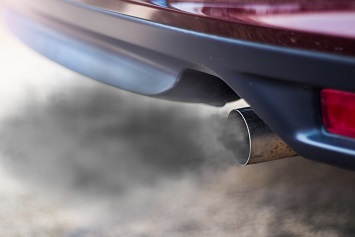Following several stern tweets from President Donald Trump, the EPA and the U.S. Department of Transportation (DOT) have put the California Air Resources Board (CARB) on notice that the voluntary framework the state reached with four major automakers “appears to be inconsistent with federal law.” The EPA/DOT letter urged CARB to disassociate itself from the commitments made by the four automakers—Ford Motor Company, Volkswagen Group of America, American Honda Motor Company, and BMW of North America.

olando_o / iStock / Getty Images Plus / Getty Images
Separately, The Wall Street Journal reported that the U.S. Department of Justice is investigating two of the companies to determine whether the agreement constitutes illegal manipulation of the U.S. automobile market.
2012 regulations and waiver
These actions can be backtracked to the EPA/DOT’s August 2018 proposal to pare down auto and small-truck standards issued in 2012 by the Obama administration for tailpipe carbon dioxide emissions and fuel economy. The proposal, which covers model years (MY) 2021–2016, would freeze these standards at the 2020 levels. For example, the proposed 37.0-miles-per-gallon (mpg) projected overall industry average fuel economy requirement for all affected vehicles for MYs 2021–2026 contrasts with the 46.7-mpg projected requirement in MY 2025 under the 2012 standards. A comparable loosening of the greenhouse gas (GHG) emissions limits would also occur.
In the proposal, the EPA is also seeking to revoke what is called the California waiver. Under the Clean Air Act, only the federal government may set vehicle fuel economy standards. However, under the Act, California may apply to the Agency for a waiver that allows the state to set its own standards. Once California promulgates standards that differ from the federal standards, any other state may also adopt those standards. For nearly 50 years, the EPA has routinely granted California’s requests to extend the waiver. But the current administration says it favors a single set of regulations for all 50 states.
ZEV program
The most recent flare-up began in July 2019 when the four automakers agreed with CARB to pursue fuel economy standards for MYs 2022–2026 that are slightly below the 2012 standards but are considerably more rigorous than what the Trump administration has proposed. The companies also agreed not to challenge California’s tailpipe GHG emissions standards or the state’s zero-emission vehicle (ZEV) program. Under that program, auto manufacturers must produce a number of ZEVs and plug-in hybrids each year based on the total number of cars sold in California by the manufacturer.
President jumps in
On August 21, Trump sent out two tweets that appeared to respond to the agreement.
First tweet: “My proposal to the politically correct Automobile Companies would lower the average price of a car to consumers by more than $3,000, while at the same time making the cars substantially safer. Engines would run smoother. Very little impact on the environment! Foolish executives!”
Second tweet: “Henry Ford would be very disappointed if he saw his modern-day descendants wanting to build a much more expensive car, that is far less safe and doesn’t work as well, because execs don’t want to fight California regulators. Car companies should know....”
EPCA and fuel economy
In their September 6, 2019, letter, the EPA/DOT state:
“Congress has squarely vested the authority to set fuel economy standards for new motor vehicles, and nationwide standards for GHG vehicle emissions, with the Federal government, not with California or any other State. Section 209 of the Clean Air Act prohibits California and other States from adopting or attempting to enforce their own emissions standards. And the Energy Policy and Conservation Act (EPCA) expressly preempts States from setting fuel economy standards for motor vehicles or taking any other action ‘related to’ the regulation of fuel economy. Given the direct, scientific link between GHG emissions and fuel economy, any effort by California to adopt or apply the standards and related commitments agreed to in the framework clearly implicates EPCA’s preemption provision. Moreover, the State cannot take any action that does not comply with the requirements of Section 209 of the Clean Air Act.”
California Governor Gavin Newsom responded to the letter in a tweet of his own:
“California’s progress in automobile emissions will not be re-written by Donald Trump and his sharpie.”